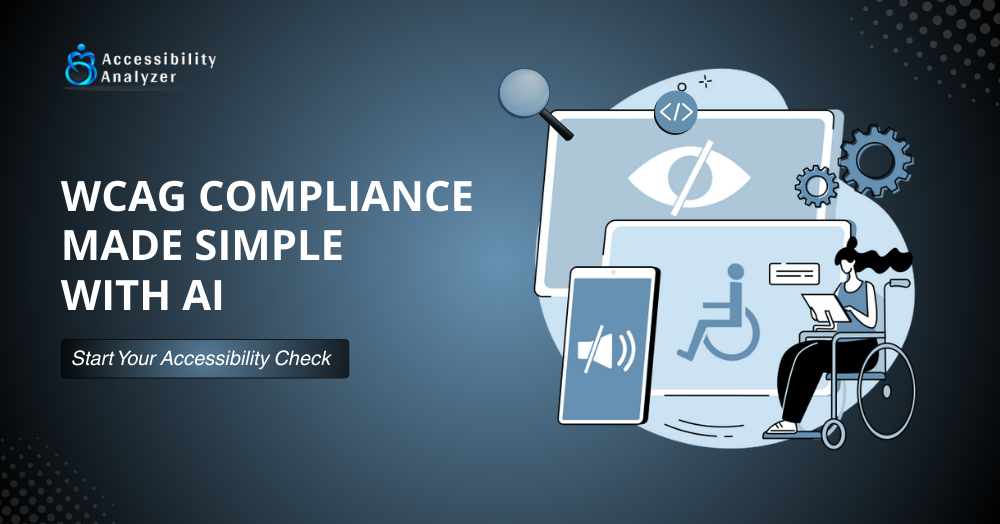Making your website accessible is essential in today’s digital world. It ensures that digital products are designed to be usable by people with disabilities, including motor, visual, auditory, and cognitive impairments. Making your website accessible is not just a matter of ethics but also profit. Inaccessible websites can result in missing out on a large audience and revenue.
Thus, in this article, we will explore why the WCAG analyzer is crucial for business development.
Inclusivity and Equal Access
Accessibility is often overlooked when businesses develop websites, leading to costly issues later on. Inclusivity enables developers to think about potential barriers and biases early and address them. It is crucial to evaluate whether your product or marketing pages could discourage people from using or learning about your product. If it does, your website or app needs a WCAG analyzer to make it inclusive and offer equal access to users, including those with disabilities.
Improved User Experience
By making websites and apps accessible to every single user, the WCAG 2.2 accessibility checker improves user experience. Any of your users could be using assistive technology to navigate their mobile devices and computers. Therefore, it is important to make your websites or applications work well with these tools:
- Screen Readers
It is software that reads out content to the users and allows them to navigate through keyboard shortcuts.
- Keyboard-only Navigation
Users who have visual or motor impairment and cannot operate with a mouse need to be able to navigate entirely via keyboard.
- Screen Magnification
It is a software or hardware tool that magnifies the screen to an extreme level for people with low vision.
- Dictation Software
This software allows people who have difficulty with computer input devices but can speak to navigate by voice.
Wider Audience and Market Reach
By making applications and websites accessible, businesses can reach a wider audience and increase their market share. More revenue can be generated if businesses and organizations make their products accessible to people with disabilities. The WCAG analyzer removes barriers for people with disabilities, improves search engine optimization, and enhances overall user experience, which helps in building a positive brand image. Accessible features are easy to use and provide a more seamless experience to users, which ultimately leads to higher conversion rates.
Regulatory Compliance
There are laws and regulations that require businesses to make their websites or applications accessible and inclusive. WCAG analyzer can help businesses ensure their compliance with these laws and regulations globally. It performs regulatory checks to ensure compliance with legal requirements. WCAG accessibility checker streamlines the process of finding relevant regulations, monitoring for changes, and conducting internal audits, helping organizations avoid penalties and maintain compliance. It automatically scans your website for issues that violate laws related to accessibility barriers for users with disabilities.
Types of Accessibility Testing
There are various types of accessibility testing that verify your website’s accessibility. A single accessibility checker is not enough to meet WCAG standards or prevent lawsuits. Therefore, for comprehensive accessibility testing, your website requires a multi-layered approach that covers every asset in your digital ecosystem. Here are the three main types of accessibility checkers that businesses should use to make their website inclusive and stay compliant with WCAG 2.2 guidelines.
- Automated Testing
It quickly identifies accessibility issues that are easier to fix.
- Manual Testing
It involves real people with WCAG expertise to ensure compliance with regulatory standards and website accessibility.
- User Testing
It involves real people with disabilities using your website to confirm that it is usable for them. This type of testing is essential to ensure that your website is accessible to everyone.
The Bottom Line
WCAG analyzer is essential to make your product reach and be understood by every single individual. The world is becoming increasingly digital, with the internet being the primary way we communicate, find information, shop, and socialize. To ensure everyone feels included, these platforms must be accessible to individuals with disabilities. Overall, accessibility testing shows your commitment to accessibility, providing equal opportunities and positive user experiences for all.

